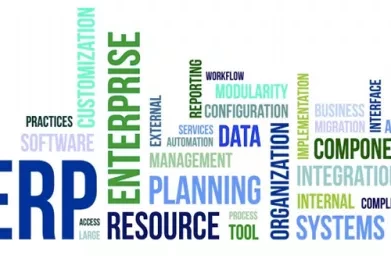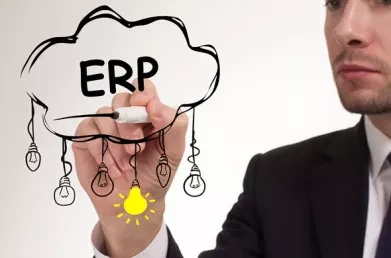Planning for Reporting in ERP Projects
ERP systems collect a lot of data about an organisation’s operations. Business Intelligence (BI) can allow this data to be analysed and presented to support effective decision making. So why is BI often an afterthought in an ERP implementation?
What has Business Intelligence got to do with an ERP implementation?
ERP systems support integrated business processes and capture the data required to drive these processes. There are two key ways in which this data supports the realisation of the potential of the ERP system. The first is fundamental to the operation of the ERP, that is, the data that allows process integration. This can help deliver potential benefits like organisational optimisation or process re-design. Beyond this, some of the more intangible but potentially more far-reaching benefits of ERP can be supported by this integrated data. Specifically - management visibility of information; supporting informed decision making; enabling the organisation to react with agility to new challenges and opportunities. To realise these second group of benefits, the data in the system needs to be turned into management information and presented in an easily navigable format that can be readily analysed and acted upon. A well designed Business Intelligence infrastructure providing the right reports and metrics will be a key component to maximising the value of this data and hence of the ERP system.
So why is reporting often an afterthought in an ERP implementation?
ERP implementation projects are usually large, complex and expensive. During the programme scoping and ERP business case development, reporting is often excluded or reduced to a nominal budget figure for key report development. A number of factors may contribute to this fact:
- The desire to Reduce Costs: Reducing the scope of an ERP programme to the “essentials” may help to get the budget approved. This cost saving can be a chimera as investment in BI is likely to be required later on anyway. Delaying this investment is likely to delay the overall return on investment.
- BI is perceived as Peripheral: BI is often perceived as being peripheral to the core data capture process of ERP. The truth is that BI is integral to modern ERP. Apart from the management information that BI should provide, many ERP vendors, having acquired BI vendors, have invested little in “canned” reports and have focussed on the BI offering. The result of this is that customers often end up replacing “canned” reports with BI Suite equivalents.
- BI is not the Vendor’s Key Offering: This may seem contradictory given that we have already said that many ERP vendors have acquired BI vendors. But by selling ERP alone the vendors can be confident that the customer is likely to generate follow on sales of the BI product at a later date.
See also ERP Selection Strategy: Cultivating Vendor Engagement
Allowing these factors to exclude BI or reduce it to a peripheral component of the programme will delay much of the benefit delivery that ERP can provide. On top of this an ERP system with poor reporting capability will antagonise users. These users may have been spoon-fed custom developed reports that were built up over a long period in the old system and which they perceived as satisfying their requirements.
Let’s get real!
Bearing in mind that budgets may be inelastic and full blown BI solutions may not be possible together with the ERP, some guiding principles can help minimise the time to realising the benefits of BI with ERP and to reduce the likelihood of wasted spend on a temporary solution.
- Perform some best-fit analysis of a BI solution to complement the ERP when scoping the project.
- Include some level of BI development in the ERP project and architect it for growth. The architecture should be extendable to accommodate future growth without significant re-design or replacement.
- Include BI in the project budget. This will probably include hardware, software and development time.
- Don’t rule out the possibility of retaining your existing BI system and integrating the ERP with it, despite the fact that the ERP vendor may be pushing their solution.
- Align BI with your overall ERP process design activities. This means including the necessary reports in your User Acceptance Testing (UAT) test scripts and sign-off plan. This will ensure reporting does not get de-prioritised or post-phased – leading to user dissatisfaction and the perception that the old system was much better than the new one.
- Align BI with your data migration strategy if necessary. You may want to migrate historical data to the new BI system for comparative reporting.
- Plan for supporting the system. You will certainly have more reporting requirements following the ERP Go-Live. Even with a strong implementation team and an educated user community the reality is that users will find it difficult to specify all of their reporting requirements before the ERP goes live. Plan for a busy period of report development post Go-Live and for an on-going requirement here.
Taking these pointers in to account when scoping and planning your ERP system will help with user acceptance of the system and provide a platform for maximising the value of the ERP investment through information visibility and real Business Intelligence.
This blog was written by Ian O'Toole, Managing Partner at Lumenia. For further information please send an email to Ian O'Toole



